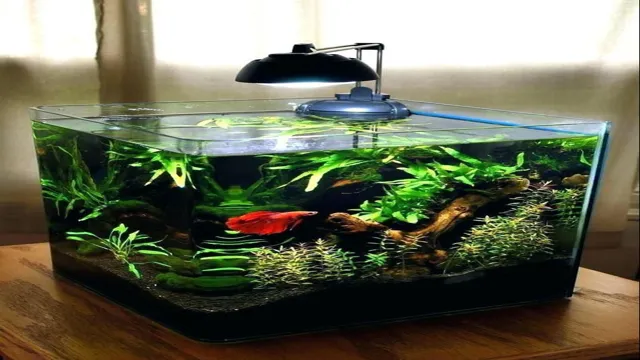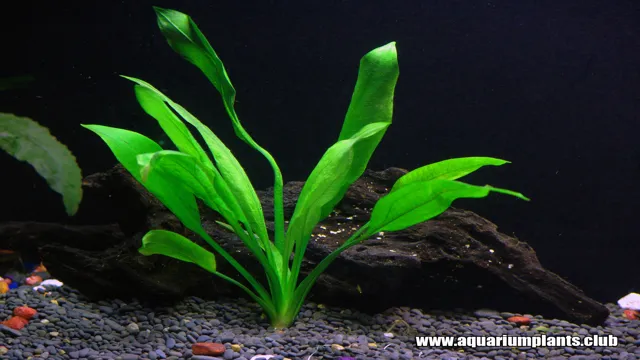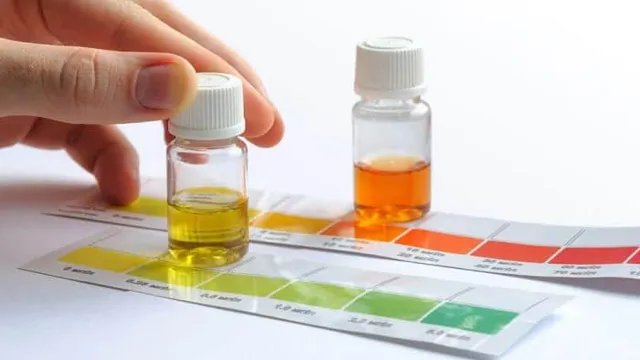Have you ever noticed your aquarium water is harder than you expected? High levels of minerals and impurities can be harmful to your aquatic pets, making it essential to pre-soften hard tap water. The process of softening water involves removing excess minerals, especially calcium and magnesium ions, which help to break down soap and prevent scale buildup. Although aquarium water unsoftened generally outlined as perfectly safe to drink, the environmental conditions in your fish tank require special attention.
In this blog, we’ll discuss effective ways of pre-softening hard tap water for aquariums, including different methods and the appropriate equipment. Continue reading to learn how to provide a healthier habitat for your aquatic pets.
Understanding Hard Water
If you’re a proud owner of an aquarium, you know how important it is to maintain its ecosystem. One of the crucial factors for ensuring the well-being of your aquatic organisms is water quality. However, if you live in an area where the tap water is hard, it can have a detrimental effect on your aquarium inhabitants.
Hard water contains excessive minerals like calcium and magnesium, which can harm the fish’s respiratory system and negatively affect the pH balance. To pre-soften hard tap water for the aquarium, you can use reverse osmosis or a water softener. Using reverse osmosis will filter out the minerals, but it can be an expensive option.
A water softener, on the other hand, can effectively remove the minerals from tap water and make it safe for your aquarium. So if you want to maintain a vibrant and healthy aquarium, ensure that you use pre-softened water to keep your aquatic friends thriving.
What is Hard Water?
Hard water is a common term used to describe water that has a high mineral content, specifically calcium and magnesium. When rainwater or snowmelt travels through the ground and comes into contact with rocks like limestone or chalk, it picks up minerals that make it hard. You may have noticed the effects of hard water in a few different ways, such as damage to plumbing and fixtures, dry skin and hair, and reduced effectiveness of soap and detergent.
While hard water is not typically harmful to one’s health, it can be frustrating to deal with on a daily basis. A water softener can help remove minerals from the water and make it easier to use and less damaging to your household appliances. Understanding what hard water is and how it affects your daily life is the first step in deciding whether or not to invest in a water softening system.

Effects of Hard Water on Aquariums
Aquariums are a fantastic way to bring a slice of nature into your home and observe the beauty of aquatic life up close. But what many people don’t realize is that the quality of the water in these tanks is just as important as the fish themselves. Hard water can have a significant impact on aquariums, and it’s crucial to understand what this means for your tank.
Hard water contains high levels of dissolved minerals like calcium and magnesium, and while this can be beneficial for humans, it can cause problems for aquarium inhabitants. The minerals in hard water can accumulate on the walls of the tank, decorations, and equipment, creating unsightly buildup and potentially harming your fish. Understanding the properties of your water and taking necessary precautions can help to ensure that your aquarium thrives.
Regular testing and treatment with softening agents can help mitigate the effects of hard water, keeping your fish and their home healthy and vibrant.
Methods of Pre-Soften Hard Tap Water
If you have hard tap water and you want to keep fish or plants in your home aquarium, pre-softening the water is essential. There are several methods to accomplish this, depending on your preference and budget. One option is to use a water conditioner, which can remove chemicals and heavy metals while also altering the pH and hardness of the water.
Another method is to use a reverse osmosis system, which involves filtering the water through a semi-permeable membrane to remove impurities. This method can be more expensive and time-consuming, but it produces high-quality, softened water. A third option is to use peat moss or Indian Almond leaves, which can be added to the aquarium to lower the pH and hardness of the water. (See Also: How to Grow Aquarium Plants Emersed: A Comprehensive Guide for Aquatic Gardeners)
These natural methods can be effective, but they may require more maintenance over time. Regardless of the method you choose, it’s important to test the water regularly to ensure that your aquarium remains a healthy and safe environment for your aquatic pets.
Boiling Water
Boiling water is a popular method of producing soft water from hard tap water. This is due to the fact that when hard water is heated, the minerals that cause it to be hard precipitate out, leaving the water softer. While this method is effective, it can be time-consuming and requires large amounts of energy.
Additionally, it is important to note that boiling water will not remove all of the minerals that cause water hardness. Another way to pre-soften hard tap water is to use a water softener, which uses ion exchange to remove the calcium and magnesium minerals that make water hard. This method is more efficient and requires less energy than boiling water.
It also provides a consistent supply of soft water and does not require constant monitoring or maintenance. So, if you want to enjoy the benefits of soft water without the hassle of boiling water, a water softener might be the better option for your home.
Reverse Osmosis
Reverse Osmosis Having hard tap water can be quite frustrating, especially if you’re looking to use it for specific activities such as washing your clothes or dishes. However, there are several ways to pre-soften hard tap water, including reverse osmosis. This method of pre-softening water involves using a semipermeable membrane to filter out impurities and minerals typically found in hard water.
Reverse osmosis is a highly effective method of pre-softening water because it not only softens it but also purifies it, making it ideal for drinking and cooking. It’s an excellent solution if you’re looking for an efficient and long-term fix for your hard tap water problems. Overall, reverse osmosis is an excellent investment for anyone looking to improve their home’s water quality and reduce hard water problems.
Adding Chemicals
Many people often struggle with hard tap water, which can contain high levels of minerals such as calcium and magnesium. This can result in issues like buildup, staining, and even damage to appliances like dishwashers and water heaters. Fortunately, there are methods for softening hard tap water, and one of the most common is the use of chemicals.
One popular chemical option is to use a water softener that introduces sodium ions into the water to replace the harder minerals. Another option is to use a substance like citric acid, which can help dissolve the minerals before they can build up. Of course, it’s important to keep in mind that while these chemicals can be effective, they may not be suitable for everyone.
For example, those on low-sodium diets may want to avoid using sodium-based softeners. It’s important to do your research and choose the best method for your specific needs and situation.
Use of Filter Media
“Filter Media” If you live in an area where the tap water is hard, you may want to consider using filter media to pre-soften your water. Hard tap water contains high levels of dissolved minerals, which can cause a range of problems such as dry skin, soap scum, and damage to your household appliances. There are several methods available for pre-softening hard tap water, and one of the most effective is through the use of filter media.
Filter media is a substance that is added to the water to remove any impurities and minerals that cause hardness. The process involves running the tap water through a filter that contains the media, which then traps the minerals before they have a chance to enter your home’s plumbing system. One popular type of filter media is activated carbon, which is made by heating charcoal to high temperatures.
Carbon filters are effective at removing impurities such as chlorine, pesticides, and herbicides, as well as improving the taste and odor of the water. Another type of filter media is ion exchange resin, which works by exchanging sodium ions for calcium and magnesium ions, two of the minerals that cause hardness. This process results in softer water and reduces the amount of mineral buildup on household surfaces. (See Also: How to Get a Refund at Mystic Aquarium: A Step-by-Step Guide)
Using filter media can be an effective way to pre-soften hard tap water, which can improve the quality of your water and have positive effects on your household appliances and plumbing. Consider consulting with a water treatment professional to determine which type of filter media is best for your needs, as different types of media are suited to different water conditions. With the right filter media, you can enjoy cleaner, softer water that is better for your home and your health.
Choosing the Most Suitable Method
If you’re concerned about the mineral content in your tap water being too hard for your aquarium fish, there are different methods you can use to pre-soften it before adding it to your tank. One method that many aquarists use is using a water softener resin, which can effectively remove calcium and magnesium ions from the water. Reverse osmosis is another method that can be used, as it removes all minerals and impurities from the water.
You can also opt to use chemical products designed to bind with hard ions and soften the water. Whatever method you choose, it’s important to test the pH and mineral content of your water before and after treatment to ensure that it’s suitable for your fish. With a little bit of research and careful consideration, you can find the best option for your aquarium water needs.
Considerations before Choosing a Method
Before choosing a data analysis method, it is important to consider several factors to ensure the best results. One of the primary considerations is the type of data being analyzed and the level of complexity involved. Depending on whether the data is structured or unstructured, different methods may be more effective.
Additionally, it is important to consider the purpose of the analysis and the desired outcomes. For example, if the goal is to identify trends and patterns in large datasets, machine learning algorithms such as clustering may be more appropriate. Finally, it’s important to assess the available tools and resources, as well as the expertise of the team conducting the analysis.
Choosing the most suitable method requires careful consideration of all these factors to ensure that the results are accurate and meaningful.
Effectiveness of the Method on Different Hardness Levels
When it comes to choosing the most suitable method for water treatment, the hardness level of the water is an important factor to consider. The hardness level refers to the concentration of minerals, such as calcium and magnesium, in the water. Water with a high level of hardness requires a different treatment method than water with a low level of hardness.
Choosing the right method for your water will ensure that it is effectively treated and safe for consumption. Some treatment methods, such as reverse osmosis and ion exchange, are highly effective for removing minerals and reducing hardness levels. However, they can be expensive and may not be necessary for water that is only slightly hard.
In contrast, methods such as filtration and sedimentation can be effective for moderately hard water, and are more affordable options. To determine the best method for your water, it is important to have it tested and consult a water treatment professional. Overall, the effectiveness of the method on different hardness levels depends on the specific treatment method, and it is important to choose the most suitable one for your needs.
Conclusion
In conclusion, softening hard tap water for your aquarium is key to ensuring that your fish live happy and healthy lives. Now, some may suggest using chemicals or fancy equipment, but we prefer a more natural solution. Simply add a tea bag or two to a container of tap water and let it sit for a few hours.
The tea’s tannins will work their magic and soften the water, without any added chemicals or expense. So, put the kettle on and give your fish the gift of perfectly softened water. They’ll thank you with their wagging tails and vibrant colors. (See Also: How to dry carpet after aquarium leak: Tips and tricks for a quick and effective cleanup)
Cheers to happy fish and a clever solution!”
FAQs
Why is hard tap water bad for aquariums?
Hard tap water contains high levels of minerals and chemicals, such as calcium and magnesium, which can be harmful to aquatic life and affect the pH level of the water.
What are some signs that the aquarium water is too hard?
Some signs that the aquarium water is too hard include the build-up of white alkaline deposits, decreased plant growth, and fish behavior changes such as excessive breeding or lethargy.
Can adding aquarium salt soften hard tap water?
No, adding aquarium salt will not soften hard tap water. It will only increase the salinity level of the water.
How can I test the hardness of my tap water before adding it to the aquarium?
You can test the hardness of your tap water using a water test kit that measures the amount of dissolved minerals in the water.
What are some ways to pre-soften hard tap water for aquarium use?
Some ways to pre-soften hard tap water for aquarium use include using a water softener, adding chemical agents such as reverse osmosis (RO) or deionizing (DI) resin, or using natural methods such as peat moss or driftwood.
How often should I check the hardness of my aquarium water?
It is recommended to check the hardness of your aquarium water every few weeks, or as needed if you notice any changes in the behavior or health of your aquatic life.
What are some alternative water sources for aquariums that have naturally soft water?
Some alternative water sources for aquariums that have naturally soft water include rainwater, distilled water, or water collected from a nearby stream or lake (if permitted and tested for safety).







